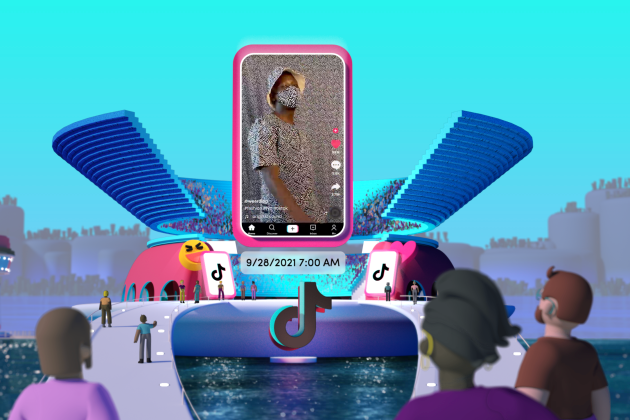TikTok Shopping Is Now Official

At its very first TikTok World marketing event on Tuesday, the tech company unveiled a new set of features that open up shopping on the network, finally turning the social video company into a bona fide social commerce platform.
Brands will now have the ability to link products, host live shopping and choose from two additional ad types that feature multiple products and user targeting. The releases were 18 months in the making and now fall under the banner of a category officially called TikTok Shopping.
More from WWD
According to the company, “TikTok Shopping is the suite of solutions, features and tools that give businesses the opportunity to tap into the power of commerce on TikTok.” The company also revealed integration partners that include Equis, PrestaShop, Wix and, of course, existing partner Shopify.
With product links, brands can feature one or more products directly from organic TikTok videos and direct users to product pages. Live shopping offers real-time demos or livestreamed product showcases with concurrent links to buy products and services. Collection ads allow brands to add custom, swipe-able product cards to in-feed video ads, while dynamic showcase ads can serve personalized, targeted ads based on users’ interests.
The announcements and the new TikTok Shopping category mark a major shift in what had been the company’s somewhat closed approach to online retail.
In the past year and a half, TikTok explored shopping through individual partnerships with Levi Strauss & Co. and Walmart Inc., and pilot programs with select merchants in Europe and elsewhere via Shopify. Now any brand can host live shopping or link their videos to product pages.
“It is a fully immersive experience, and we’re fully integrating with both — obviously the merchant side and also providing the user a very seamless shopping experience on TikTok,” Ray Cao, managing director and global head of product strategy and operations at TikTok, told WWD. “It can be [an] extremely safe shopping environment. People can really see what they’re actually buying and also directly checkout in the app.”
The immersive quality Cao referred to describes how viewers can see an item, shop that product, view details and then checkout in a “closed loop” experience that doesn’t necessarily kick them out of the app — though retailers have the option to conduct the transaction themselves.
“We do offer two integration points: one is directly on TikTok, and the other — we’re still going to be providing the flexibility for users to convert on the merchants’ own websites, as well,” he added.
But TikTok’s approach to shopping isn’t differentiated so much by its feature details as its community.
As a popular online destination for the highly coveted Gen Z consumer, the platform enjoys a highly active user base of 1 billion people. These users interact with motivated creators, and the company takes pains to understand the dynamic between those creators and brands.
Some of that insight comes courtesy of sibling company Douyin. The China-based social commerce titan works with brands like Louis Vuitton, Estée Lauder and others, including beauty brands Make Up For Ever and MAC, which have hosted live shopping there and set up Douyin Stores. According to reports by Chinese media, Douyin’s e-commerce business clocked an annual gross merchandise value of some 500 billion renminbiB, or nearly $77.5 billion, last year.
TikTok also weighs its own experience in the U.S. and other regions, and the combination, Cao feels, gives the company an advantage in social commerce.
“We do have a lot of playbooks [that] have already been learned or have already been established from the Southeast Asia part, so we definitely get those learnings,” Cao continued. “What the secret sauce here is, we do understand how to make live streaming, for example, work among brands and creators. And we do have that experience and [we’re] able to share with our creators, with our brands.”
Not that TikTok will give up one-to-one partnerships and integrations, particularly with large brands or retail partners. But it’s clearly graduating from the testing phase and opening up as a shopping platform.
“I think we definitely are opening a platform [that’s] more real. Last year, we did a couple onetime tests, and this was actually a very good beginning to aggregate those learnings in the U.S.,” he said. “And this year, we’re more open to businesses of all size.
“They’re welcome to join us. I think a lot of the learnings previously is paving the way today.”
